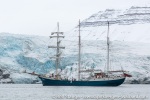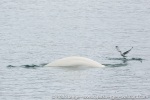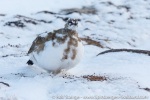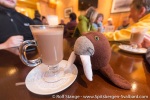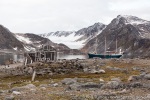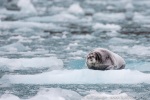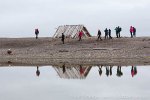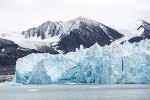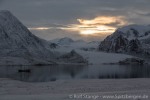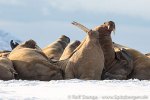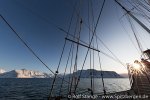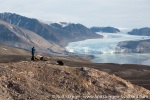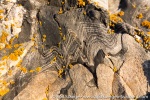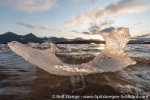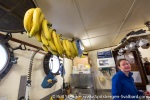-
current
recommendations- Liefdefjord
New page dedicated to one of Spitsbergen's most beautiful fjords. Background information and many photos.
- New Spitsbergen guidebook
The new edition of my Spitsbergen guidebook is out and available now!
- Liefdefjord
New page dedicated to one of Spitsbergen's most beautiful fjords. Background information and many photos.
Page Structure
-
Spitsbergen-News
- Select Month
- May 2025
- April 2025
- March 2025
- February 2025
- January 2025
- December 2024
- November 2024
- October 2024
- September 2024
- August 2024
- July 2024
- June 2024
- May 2024
- April 2024
- March 2024
- February 2024
- January 2024
- December 2023
- November 2023
- October 2023
- September 2023
- August 2023
- July 2023
- June 2023
- May 2023
- April 2023
- March 2023
- February 2023
- January 2023
- December 2022
- November 2022
- October 2022
- September 2022
- August 2022
- July 2022
- June 2022
- May 2022
- April 2022
- March 2022
- February 2022
- January 2022
- December 2021
- November 2021
- October 2021
- September 2021
- August 2021
- July 2021
- June 2021
- May 2021
- April 2021
- March 2021
- February 2021
- January 2021
- December 2020
- November 2020
- October 2020
- September 2020
- August 2020
- July 2020
- June 2020
- May 2020
- April 2020
- March 2020
- February 2020
- January 2020
- December 2019
- November 2019
- October 2019
- September 2019
- August 2019
- July 2019
- June 2019
- May 2019
- April 2019
- March 2019
- February 2019
- January 2019
- December 2018
- November 2018
- October 2018
- September 2018
- August 2018
- July 2018
- June 2018
- May 2018
- April 2018
- March 2018
- February 2018
- January 2018
- December 2017
- November 2017
- October 2017
- September 2017
- August 2017
- July 2017
- June 2017
- May 2017
- April 2017
- March 2017
- February 2017
- January 2017
- December 2016
- November 2016
- October 2016
- September 2016
- August 2016
- July 2016
- June 2016
- May 2016
- April 2016
- March 2016
- February 2016
- January 2016
- December 2015
- November 2015
- October 2015
- September 2015
- August 2015
- July 2015
- June 2015
- May 2015
- April 2015
- March 2015
- February 2015
- January 2015
- December 2014
- November 2014
- October 2014
- September 2014
- August 2014
- July 2014
- June 2014
- May 2014
- April 2014
- March 2014
- February 2014
- January 2014
- December 2013
- November 2013
- October 2013
- September 2013
- August 2013
- July 2013
- June 2013
- May 2013
- April 2013
- March 2013
- February 2013
- January 2013
- December 2012
- November 2012
- October 2012
- September 2012
- August 2012
- July 2012
- June 2012
- May 2012
- April 2012
- March 2012
- February 2012
- January 2012
- December 2011
- November 2011
- October 2011
- September 2011
- August 2011
- May 2011
- April 2011
- March 2011
- February 2011
- January 2011
- December 2010
- November 2010
- September 2010
- August 2010
- July 2010
- June 2010
- May 2010
- April 2010
- March 2010
- February 2010
- November 2009
- October 2009
- August 2009
- July 2009
- June 2009
- May 2009
- April 2009
- March 2009
- February 2009
- January 2009
- December 2008
- November 2008
- October 2008
- August 2008
- July 2008
- June 2008
- May 2008
- April 2008
- March 2008
- February 2008
- April 2000
- Select Month
-
weather information
-
Newsletter

| Guidebook: Spitsbergen-Svalbard |
Home →
Yearly Archives: 2019 − News & Stories
Local government elections in Longyearbyen
A new local government (“Lokalstyre”) was elected in Longyearbyen yesterday (Monday, October 07). The municipal council has 15 members and elects the Lokalstyreleder (“mayor”) from these members. Lokalstyre administrates the area of the community of Longyearbyen, but does not decide on the politics in Svalbard beyond Longyearbyen.
Most votes were counted Monday evening. The result is not yet final, but major changes are not expected anymore. According to the preliminary result, Arbeiderpartiet (Ap, labour party, social-democratic) received most votes and will have 5 out of the 15 seats in the future community council. Venstre (V, a social-liberal party) got a few votes less but will also have 5 “Lokalstyremedlemmer” (community council members). Høyre (H, conservative party) and Fremskrittspartiet (right-wing libertarian party) will have 2 seats each. The local branch of Miljøpartiet De Grønne (green party) received a rather disappointing result and will only have 1 seat in the future community council, something that has certainly also to do with their election campain – not much was heard from Miljøpartiet De Grønne in Longyearbyen during the months and weeks before the elections.
Arild Olsen (Ap) has been Lokalstyreleder (mayor) since 2015. Both Olsen and Terje Aunevik (V) have chances to take the mayor’s chair in the future community council.
The voter participation was 61.7 %. All inhabitants are eligible to vote after a certain period which depends on their nationality.
Longyearbyen Lokalstyre was established in 2002, introducing local democracy in Svalbard’s largest settlement. Lokalstyre and the mayor are not to be confused with the Sysselmannen (“governor”), who is the highest representative of the Norwegian government. The Sysselmannen is not elected but appointed by the government in Oslo.

Lokalstyrevalg (community council elections) in Longyearbyen.
The council meets in “Næringsbyggget” (left).
Billefjord – 28th September 2019
Sat
28 Sep
2019
Billefjord is one of Spitsbergen’s most beautiful fjords, if you ask me. Here, we had the opportunity to go for a hike and to cruise along Nordenskiöldbreen. Also hoping to find a polar bear that might be a bit closer than the one in Liefdefjord a few days ago. This did not happen, but belugas showed up, and the stunning scenery … a perfectly fine morning!
Gallery – Billefjord – 28th September 2019
- gallery anchor link: #gallery_1753
Click on thumbnail to open an enlarged version of the specific photo.
The last landing was on Gipshuksletta, on the corner between Billefjord and Sassenfjord/Tempelfjord. Stunning arctic winter landscape in the light that you only have a few weeks before the onset of the polar night. A silent goodbye to Spitsbergen’s nature – for this time.
Barentsburg – 27th September 2019
Fri
27 Sep
2019
Sometimes it is better to adjust plans to reality, which is: the weather: this little autumn storm had not been in yesterday’s forecast, but it was clearly blowing through Isfjord today. We reached the harbour of Barentsburg in time and that was the perfect place to be on such a day with a lot of wind and poor visibility. The latter increased during the afternoon, so those who were keen on some hiking could actually take off in the afternoon. The foxes came out and played, the sauna was hot, while snow was drifting outside …
Gallery – Barentsburg – 27th September 2019
- gallery anchor link: #gallery_1750
Click on thumbnail to open an enlarged version of the specific photo.
Sallyhamna – Fuglefjord – 26th September 2019
Thu
26 Sep
2019
Again a calm night, in a small bay in northwest Spitsbergen. The day starts with a glacier view and mirror images on the water.
Sallyhamna is not a big place – not a lot of space for easy walking, that is – but beautiful. Scenery, Waldemar Kræmer’s old hut, blubber ovens and graves from the whaling years.
Later we get stunned by the large and pretty active Svitjodbreen in Fuglefjord. And by a bearded seal that is resting on a bit of ice.
Gallery – Sallyhamna – Fuglefjord – 26th September 2019
- gallery anchor link: #gallery_1747
Click on thumbnail to open an enlarged version of the specific photo.
Then it is time to leave the fjords in the north behind. We have more than 120 miles to cover to Isfjord. By now it is anyway grey and wet outside, but good sailing weather, with light northerly winds.
(Vesle) Raudfjord – 25th September 2019
Wed
25 Sep
2019
Vesle („little“) Raudfjord ist east of the „real“ Raudfjord. A beautiful lagoon landscape where you can hike in various directions as far as you want to. Also here: plastic on the beaches. Now, at least, several bags less than before.
The world disappears in fog bags while we sail around Biskayarhuken, but it clears up again as soon as we enter Raudfjord. Liquid gold comes through holes in the clouds and covers some of the sharp peaks and glaciers.
Gallery – (Vesle) Raudfjord – 25th September 2019
- gallery anchor link: #gallery_1744
Click on thumbnail to open an enlarged version of the specific photo.
Carrfjellet is only 154 metres high, but the view is stunning.
Liefdefjord – 24th September 2019
Tue
24 Sep
2019
Monacobreen is currently advancing, the western part of its front has pushed forward at least a kilometre. The glacier is accordingly very productive. At times inner Liefdefjord was completely filled up with glacier ice, almost or actually impassable. Also today there was a lot of glacier ice floating in the water. Very impressive, even on a grey morning.
Andøyane offer a great scenic contrast. Lovely scenery, colourful lichens, beautifully curved coastlines. And, sadly, a lot of plastic litter on the beaches. For bags less now, after our visit.
Gallery – Liefdefjord – 24th September 2019
- gallery anchor link: #gallery_1741
Click on thumbnail to open an enlarged version of the specific photo.
Later we saw a polar bear that captain Robert had seen on Reinsdyrflya. Quite distant. A rather skinny bear. It was tempting to leave a pile of butter on the beach. But no, we don’t do that. It is not allowed. But it is allowed to feel empathy.
Woodfjord – 23rd September 2019
Mon
23 Sep
2019
Anchoring in Mushamna turned out to be an interesting project last night. The lagoon was already frozen solid, so we preferred to stay outside. Beautiful evening- and moonlight!
Gallery – Woodfjord – 23rd September 2019
- gallery anchor link: #gallery_1738
Click on thumbnail to open an enlarged version of the specific photo.
Next morning we went and explored the beautiful winter landscape at Mushamna. Snow and sun! Inner Woodfjord, later, was in contrast to that quite windy, so we rather went into Bockfjord for an afternoon walk in the snowy tundra. It was cloudy now, a completely different mood. A landscape like carved in stone. Well, that’s what it is.
Northwest Spitsbergen – 22nd September 2019
Sun
22 Sep
2019
Weather-wise, today is our chance to sail up to the north coast. So we start early from Ny-Ålesund and spend the morning moving north along the west coast. It is clearing up in Smeerenburgfjord, getting really beautiful, so we dive deep into polar history in Virgohamna. Harbour seals are lying on stones, and a quite large herd of walruses is enjoying life in the snow in Smeerenburg. It is quite cold, and there is a smell of winter in the air.
Gallery – Northwest Spitsbergen – 22nd September 2019
- gallery anchor link: #gallery_1735
Click on thumbnail to open an enlarged version of the specific photo.
Kongsfjord – 21st September 2019
Sat
21 Sep
2019
It is a great start into the day, waking up with the noise of a thundering glacier. We are anchored near Blomstrandbreen.
Blomstrandhalvøya is the theme of the day. The choice is either a walk closer to sea level or a crossing of the island including the highest „peaks“ reaching 385 metres above sea level. Not Mount Everest, but absolutely enough for some stunning views of Kongsfjord. Back to the ship along the old mining place Marble Island / Ny London. We are a bit late, but it is worth spending every minute outside on such a golden September day.
The small islands of Lovénøyane are bird reserves, it is not allowed to visit them during the summer. But all breeding birds are gone now and we can visit legally. These small islands are treasure chests of arctic nature. Thousands of years of intense fertilising have created a thick carpet of moss tundra. Ice on the beaches and harbour seals nearby, two reindeer, many large erratic boulders, beautiful scenery everywhere around us. Silence.
Gallery – Kongsfjord – 21st September 2019
- gallery anchor link: #gallery_1732
Click on thumbnail to open an enlarged version of the specific photo.
In Ny-Ålesund they kindly open Kongsfjordbutikken for us Saturday evening. I think it was worth the effort for all involved. Our town walk and the little walk to Amundsen’s airship mast turned out to be late evening excursions. The sun went down at 19:39.
Krossfjord – 20th September 2019
Fri
20 Sep
2019
The last evening was very beautiful, with red evening light and the moon above the mountains. This morning it was … a bit bumpy. Northern wind in Forlandsund. Not so great.
Well, we were in calm waters again in Krossfjord a few hours later, where we made our first walk in arctic wilderness in Signehamna. Ice on the shore, polar foxes, reindeer, frost patterned ground, remains of a German war weather station.
Gallery – Krossfjord – 20th September 2019
- gallery anchor link: #gallery_1718
Click on thumbnail to open an enlarged version of the specific photo.
The glacier in Tinaybukta was pretty active and noisy. Later we went to yet another glacier, hidden behind a huge moraine. We could easily enter a huge mouline from the bottom end, something that is quite unusual.
Isfjord – 18th September 2019
Wed
18 Sep
2019
Back in Spitsbergen – home, sweet home 🙂 this rapid change from one world to the next one – Greenland, Iceland, Germany, Spitsbergen in just a few days – is quite crazy … the first impression of Spitsbergen from an altitude of 30,000 feet: the glacier bridge between Hornsund and the east coast. Shrinking. Heavily.
Galerie – Isfjord – 18th September 2019
- gallery anchor link: #gallery_1715
Click on thumbnail to open an enlarged version of the specific photo.
Now we are moving at sea level, on good old Antigua. Looking forward to 10 beautiful days in Spitsbergen!
Polar bears near Longyearbyen
There have been regular polar bear sightings in Isfjord during the whole summer, both on the north side, from Trygghamna to Ymerbukta and Borebukta, in Billefjord near Pyramiden, but also near Longyearbyen.
This is an ongoing situation: there have been several bear sightings recently not far from Longyearbyen, in Colesdalen, Bjørndalen and Mälardalen. The bear(s) in Colesdalen and Bjørndalen may be one and the same individual, but the one seen in Mälardalen, on the north side of Adventdalen and just a few kilometres away from the settlement and road, is another individual.
On Monday (16 September), a man had to fire a shot from inside a hut at Diabasodden, about 20 kilometres northeast of Longyearbyen, to scare a polar bear away. This worked well and then the Sysselmannen picked the man up by helicopter to avoid further risks.
All this shows that it is very important to take the risk of meeting polar bears very seriously, also in Longyearbyen’s near surroundings.

Polar bear in Hiorthhamn close to Longyearbyen (archive image).
The local newspaper Svalbardposten has a little survey every week and this time they asked what people think about the increasing number of polar bear sightings near Longyearbyen. So far 790 people have given their vote, which is a lot for the Svalbardposten gallup. 500 voted for “we live on Svalbard so we have to adjust”, but no less than 241 chose “it is time to discuss hunting polar bears again”. These surveys are not representative and certainly sometimes the questions and the given answers show an element of humour and satire, something that may also be true for the votes that people give. This may explain at least some of the many votes that ask for discussing polar bear hunting again.
Polar bears were hunted intensely in Svalbard until 1973. The recent increase in numbers is, at least in part, still a recovery from those years when hunting polar bears was an industry.
Double calendar Spitsbergen & Antarctica 2020
The new Spitsbergen calendar 2020 is available now – for the first time, as a “2 in 1” double calendar. We just used the rear sides of the calendar pages that used to be white with older editions. So now we have, additionally to the 12 Spitsbergen images, another 12 stunning images which represent the other cold end of the globe: Antarctica.
Still, we have been able to keep the price stable. And as before, the double calendar “Spitsbergen & Antarctica 2020” is available in two sizes: the larger A3 format features prominently on the wall, while the smaller A5 is … well: smaller.
For further details or ordering, please visit our online shop (click here).
Dalvik – Akureyri – 08th September 2019
Sun
8 Sep
2019
A ship that is not rocking and rolling during the night is not a bad thing, actually. Also nobody getting ready for his watch at 4 a.m. and no sails being adjusted in the middle of the night benefits a good sleep. Not bad. Sunday morning breakfast at 9 a.m., everybody seated around one table for the first time since Greenland.
The first thing we wanted was a little walk. There is a small nature reserve next to Dalvik. A nice river landscape with wetlands and associated birdlife.
The Café in Dalvik is definitely worth a visit 🙂
Gallery – Dalvik – Akureyri – 08th September 2019
- gallery anchor link: #gallery_1682
Click on thumbnail to open an enlarged version of the specific photo.
Now it is a calm, scenic passage of few hours to Akureyri, with some humpback whales on the way. And the waterfall opposite of Akureyri that is pretty unique: it is artificial and geothermal. The story is that it was suddenly there when they built the tunnel.
Then we are suddenly alongside in Akureyri. An amazing voyage has come to an end. Big thanks to all of you who were part of it, first of all to skipper and boat owner Heinz and his good crew and ship!
Denmark Strait – 06th/07th September 2019
Sat
7 Sep
2019
The timing of our departure from Greenland was good. After a few initial hours with some more wind and sea, it calmed down considerable and it has been a reasonably smooth crossing so far. Almost no wind yesterday, just some swell. Today the wind started to blow again, but we are still making 5-6 knots speed. Not record-breaking, but reasonable. We have already passed the latitude of Kolbeinsey and we expect to reach Iceland tonight.
Maritime everyday life until then: shifts on the wheel, mealtimes, time to read, sleep, …
Photo – Denmark Strait – 06th/07th September 2019

The Denmark Strait turned out to be a bumpy road today. But we got a lovely sunset at sea. Now we are entering coastal waters and later tonight we will go alongside in Dalvik, a little harbour in Eyafjordur, north of Akureyri.
News-Listing live generated at 2025/May/03 at 10:48:10 Uhr (GMT+1)


